Saving Mumbai's Heritage Botanical Garden
The Struggle of the Save Rani Bagh Botanical Garden Foundation
Introduction
It is impossible to talk about Veermata Jijabai Bhosale Botanical Udyan & Zoo, popularly known as Rani Bagh, without using superlatives - Mumbai's most visited and affordable park, its only heritage botanical garden (Grade II-B Heritage rating), the island city’s largest green open public space (60 acres), its largest agglomeration of trees (4,131) with widest tree species diversity (256), the list is seemingly endless.

Above: Welcoming vistas - a rich and diverse botanical garden - definitive
archival documents stand testimony to its existence, value and growth
over the past 160 years
The immense value of a public botanical garden can be appreciated when we consider that Mumbai has the lowest open space to population ratio in the world 0.03 acre (0.12 hectares) per 1,000 people against the international norm of 4 acres (1.62 hectares) per 1,000. Rani Bagh functions as a vital green lung for the city, attracting an average of 8,000 visitors in a day, climbing to 40,000 on holidays. Its rich natural habitat supports a rich diversity of fauna.
Established by the Agri-Horticultural Society of Western India in 1861 as Victoria Gardens, the botanical garden was laid out on 33 acres of land in Byculla. In 1890, 15 acres (6.7 hectares) were added to establish a small zoo segment, to add to the pageantry of nature there. At the same time, the world economic recession led to the bankruptcy of the Agri-Horticultural Society, which consequently ceased to exist and the Bombay Municipality took over Victoria Gardens. For over a century then the larger botanical garden and small zoo segment co-existed until the year 2007, as we shall see a little later in this story. In the 1990s two additional adjacent plots were acquired and in 2018 another parcel of land was acquired, bringing the total area to 60 acres.
In keeping with the European tradition of the day, the botanical garden was adorned with various monuments - a clock tower, a museum, a bandstand, the triumphal triple arch or Italianate gateway, a conservatory and several imposing statues - a classic blend of natural and built heritage. The stately museum, clock tower and triumphal arch are made of Porbandar stone. The Italianate gateway with its Corinthian columns harmonizes with the design of the museum, presenting an imposing gateway to the natural beauty within the park.
The botanical garden was laid out in the classical Renaissance axial planning design prevalent in many European cities and gardens. The pathways are wide and radiate in all directions, allowing the huge numbers of visitors enough space to wander about and enjoy the green space. All axes and pathways are flanked by charming internal gardens. George Birdwood, the first Curator of the Victoria and Albert (now Bhau Daji Lad) Museum described Victoria Gardens as a "garden of delight". Unlike many manicured parks Rani Bagh has a natural, welcoming, wooded ambience. In recognition of the importance of the concept of green heritage, VJB Botanical Udyan has been accorded the status of a Grade II-B heritage site (serial no. 530 Schedule of Heritage Regulations) and the Mumbai Heritage Conservation Committee (MHCC) has listed 'botanical garden' as a special feature.
Ominous Clouds of "Makeover" Gather - The Save Rani Bagh Botanical Garden Committee is born
In February 2007 a most severe blow was dealt to 138 years of coexistence of the botanical garden and zoo. With much fanfare the Brihanmumbai Municipal Corporation (BMC) announced its plans for a makeover without parallel. An allegedly fuddy-duddy park was to be transformed into a Singapore-style "international" zoo at the astounding cost of Rs 433 crore. The "international" partners of the project: Messrs. H.K.S. Designer and Consultant International, for a hefty fee of Rs 4 crore, set about designing the new "international" zoo.
For a group of us friends and botany enthusiasts (Hutokshi Rustomfram, Shubhada Nikharge, Katie Bagli, Hutoxi Arethna, Sheila Tanna and Renee Vyas), who frequented the gardens and parks in and around Mumbai, Rani Bagh was a favoured haunt. We were shocked when we heard of the redevelopment proposal, knowing that Rani Bagh had no vacant treeless space that could be earmarked for the proposed new zoo. In April 2007 we decided to band together and investigate. We found that we had entered the arena of struggle at an opportune moment - the BMC proposal had not yet received the mandatory approval of two statutory bodies: the Central Zoo Authority (CZA) and the Mumbai Heritage Conservation Committee (MHCC). We attended Right to Information (RTI) workshops and set about gathering the minutest data available - correspondence, plans, minutes of meetings etc. We resolved to harness all democratic means available to common citizens and decided to neither seek nor accept any institutional funding. Soon we set up a website, floated an online petition and began garnering the support of common citizens and environmental bodies. After five eventful years, we took on a more formal presence and registered ourselves as a public charitable trust, the Save Rani Bagh Botanical Garden Foundation with five trustees namely, Hutokshi Rustomfram, Shubhada Nikharge, Sheila Tanna, Hutoxi Arethna and Katie Bagli.
Makeover Menu
The heavy construction activity envisaged was sure to turn a natural green heritage botanical garden into a synthetic glass and concrete zoo. The list of new features was mind-boggling: Australian, African, Southeast Asian and Indian zones, an aquarium, night safari, restaurants, even an artificial Indian Ocean. Where indeed was the space or the need for this elaborate amusement park? Even a glass-walled fine dining eatery was planned, from where well-heeled patrons could view cheetahs as they wined and dined.
Above: A recipe for disaster. Images reproduced from a report announcing the makeover
(Maharashtra Times of March 6, 2008)
Existing and proposed land use
Note the dense greenery in the layout drawing titled "Existing land use". As much as 63 per cent of the land is denoted in green as area under garden, while the area marked in blue denotes existing animal enclosures. In contrast, note the shrunken green area in the drawing titled "Proposed land use" and the correspondingly increased area under animal enclosures.
Above: Note the shrinkage in the garden space and the corresponding increase in the space for animal enclosures in the graphic.
Drawings by Priti Kolambekar
Pathways - heritage layout disregarded
We successfully argued before the MHCC that the existing layout of Rani Bagh following the Renaissance axial design, being integral to its heritage status, needed to be preserved. The extensive crisscross of pathways is both an essential design element and a decongestion device. The proposed master plan, however, presented a single pathway. Had it been implemented, it would have surely led to extreme overcrowding with the likely hazard of a stampede, given the density of visitors.
Above: The single pathway in the proposed plan would have led to untold over-crowding, obliterated the
classical design and destroyed the flora. Drawings by Priti Kolambekar
Impact of Proposed Makeover
Two major issues faced Rani Bagh in the event of the new master plan ever coming to reality:
Enormous construction activity
The price tag itself sounded the direst warning. If Rs 433 crore of public money was to be spent, then surely the scale of construction would be enormous. The first layout drawings we received under the RTI Act confirmed our worst fears. Every pathway, water body, animal enclosure was slated to be demolished and a host of new ones constructed. New moats, electrification, fresh water and sewage lines would have wreaked havoc on age-old tree root systems. The BMC planners acted as if they were dealing with a clean slate rather than a 146-year-old heritage botanical garden (as it was in 2007).
Egalitarian park turns elitist?
After spending Rs 433 crore of public funds, fixing the post-makeover entry fee was to be the BMC's prerogative. What would the tab be? Rs 300? Rs 400? At Rs 5 for adults and Rs 2 for children the then entry fee was highly affordable for a cross-section of citizenry, keeping the garden accessible to underprivileged sections. The feared steep entry fee escalation and the preservation of the heritage botanical garden, became the two chief planks of our struggle and online petition. We expressed the view that common citizens, starved as they are of green open spaces, have every right to continue to visit Rani Bagh as they had the century and more.
Milestones in a Multi-Pronged Struggle
The Save Rani Bagh Committee harnessed all democratic institutions and processes accessible to common citizens. We forwarded innumerable memoranda, appeared for official hearings and site visits, raised our voice through the media and approached the Bombay High Court under writ jurisdiction.
Harnessing the power of the Right to Information,
The RTI Act became an invaluable tool. Often, we procured the same documents from different bodies for instance, the CZA and the BMC and cross-checked data. We exposed the inconsistencies between stated positions and recorded minutes. Personal follow-up, systematic scrutiny of documentation and detailed presentations became our strengths. We built up a bank of correspondence with the BMC, CZA, MHCC and the Central Ministry of Environment and Forests (MoEF) and exhorted all four bodies to reject the proposal. As the Save Rani Bagh Committee we took a firm policy decision - one that we have observed to this day. We would approach every public servant but would keep away from self-styled power-brokers of all hues.
Awareness campaigns and solidarity
We raised awareness through nature trails and audio-visual programmes at schools and colleges. The media gave consistent coverage to the issue. Virtually all Mumbai environmental groups lent support - BNHS, WWF-India, Sanctuary Asia, Friends of the Trees, CitiSpace, Awaaz Foundation and Bombay Environemtal Action Group. In addition, the Royal Botanic Gardens Kew, Urban Design Research Institute, Oval Trust, AGNI and Clean Air too endorsed our position - a heritage botanical garden was location-specific and a large zoo, if needed for the city, could be set up at an alternate location. We remain grateful to all these institutions for their solidarity.

Above: Students of the Sir J.J. College of Architecture take a pledge to preserve the
botanical garden in October 2007
after an awareness raising walk conducted by the
Save Rani Bagh Committee.
Focus CZA
As early as September 2007 we met with the CZA Patnaik-Mehta expert team. Even though their report supported our stand, the CZA accorded conditional approval to the plan stating that not a single tree, bush or creeper was to be cut, transplanted or removed. This farcical condition, was of course, impossible to translate into practice. We remained undaunted, converted adversity to advantage and repeatedly quoted the CZA mantra to the BMC that not a single tree/bush/creeper could be touched. The CZA officials informally told us the ball was now in our court; however, we continued to exhort them, visiting New Delhi several times and sending a stream of petitions, citing numerous reasons for a review. This persistence bore fruit two years later when the CZA under a new Member Secretary did undertake a review and dispatched an investigating team of Dr. Eruch Bharucha and Mr. V.B. Sawarkar. Once again, we met both experts and explained our concerns.
Knocking on the doors of the Bombay High Court
Since the early days of our struggle we were cognizant of the fact that we may need to approach the Mumbai High Court under writ jurisdiction To this end, we consciously created a water-tight record forwarding detailed representations to all official bodies. Several lawyers and a few environmental activists advised us to only fight for the survival of the trees and not for the entire botanical garden, its heritage layout and public access to trees. We, however, fought for all three issues. We argued that preserving the geographical area of the botanical garden, its layout and accessibility to trees would save the trees in practice. A halfway compromise would have spelt doom. When the BMC announced that it was going ahead with the plan even though we knew it did not then have the requisite approvals, we filed a Public Interest Litigation (PIL) to make the plan public. This and a subsequent contempt petition perhaps acted as a warning to the CZA, MHCC and BMC in later years. If we could approach the High Court to make the plan public, surely we would do the same to prevent the decimation of the botanical garden.
Focus BMC
Over the years we interacted with innumerable Municipal Commissioners, Additional Municipal Commissioners, Superintendents of Gardens and BMC officials and the Union Minister of Environment and Forests. Rani Bagh became our second home. We protested every unlawful act and impropriety - unauthorized construction works, BMC corporators on overseas jaunts at the BMC Consultant’s expense, setting up an unauthorised cement mix plant, earmarking a large plot for residential quarters of BMC employees, and so on.
Focus MHCC
The struggle to convince the Mumbai Heritage Conservation Committee to reject the plan was long and hard but also had its occasional moments of humour. We played our trump card in 2007 by successfully petitioning the MHCC to include the term botanical garden as a special feature. Our hands were greatly strengthened by the unstinted and rock-solid support of Mr D.M. Sukthankar, former Chief Secretary and Chairman of the MHCC, and Mr S.G. Kale, former Municipal Commissioner and Chairman of the Pune Heritage Committee. They participated at MHCC hearings and meetings with the Municipal Commissioner. We presented minutely analysed data and countered every false claim with hard evidence, demonstrating how the BMC manipulated figures to suit its ends.


Above: Former Municipal Commissioners and concerned citizens - Mr. D.M. Sukthankar and Mr. S.G. Kale threw their weight behind
the cause of protecting the botanical garden and demanded that the redevelopment plan be scrapped. They represented with the
Save Rani Bagh Committee at hearings before the MHCC and the BMC
BMC denies existence of botanical garden
At one juncture the then Additional Municipal Commissioner (AMC) Mr R.A. Rajeev, denied the very existence of the botanical garden! Thus began a new phase in our struggle. We appealed to all environmental groups for their support to counter this ludicrous stance and furnished every available proof of the existence of the botanical garden. We laboured through volumes of gazetteers, histories of Mumbai, met heritage experts and historians, combed national and international websites. The AMC Mr Rajeev was not fazed when shown that BMC's own website listed Rani Bagh as a botanical garden; and not even by the fact that he had himself accepted an Indian Heritage Society award for a beautifully maintained heritage botanical garden, in December 2008 from the Maharashtra Governor at Raj Bhavan.
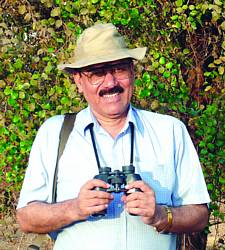

Above: MHCC appointed experts, Dr. Asad Rahmani and Dr. Marselin Almeida rooted for the botanical garden, unequivocally
denouncing the redevelopment proposal.
Impasse at MHCC and the appointment of experts
As the BMC refused to acknowledge the existence of the botanical garden, we exhorted the MHCC to fulfil its mandate and protect the garden. To navigate through this impasse the MHCC appointed Dr Marselin Almeida, renowned botanist and Dr Asad Rahmani, then Director BNSH as experts to give their opinion. Both denounced the international zoo proposal. Their firm stand helped close the argument regarding the existence of the botanical garden. After 15 months of deliberations, the MHCC returned the proposal in May 2010. One of the objections raised by the MHCC was that the Rani Bagh tree survey was riddled with errors. The BMC then assigned the task of conducting a fresh floral survey to Dr Almeida. The detailed survey, completed in October 2010, did the botanical garden proud 843 plant species at one location is clearly an outstanding benchmark.
Unauthorized construction and dumping of debris
We protested against the unauthorized construction of a temporary animal hospital where hundreds of bushes and climbers were cleared, thereby violating CZA's cardinal condition. This objection too later helped us secure a CZA review. In another instance, debris was dumped in an internal garden for 11 months. When after several complaints it was cleared, four trees lay dead. We sent pictures to the BMC, CZA, MHCC and the MoEF, underlining the point that if in the process of debris dumping and removal four trees were destroyed, many hundreds might be sacrificed if the grandiose makeover got underway.
Above left: Repeated representations regarding the unauthorised construction of a so-called temporary animal hospital finally
led to a CZA review and eventual rejection of the plan. Above right: Four healthy trees sacrificed due to inexplicable dumping
of debris - a grim forecast of Rani Bagh's fate had the makeover gone through.
Backing from the Ministry of Environment and Forests
Two decisive nails in the coffin to the international zoo proposal were delivered courtesy the Minister of Environment and Forests, Mr. Jairam Ramesh and the Municipal Commissioner Mr. Subodh Kumar. In March 2011 we met Mr Jairam Ramesh, who wrote to the Maharashtra Chief Minister unequivocally backing our stand. The Minister's office released his comprehensive letter to the press, where it was widely reported. Soon thereafter, at a Mumbai press conference, Mr. Ramesh declared that the sanctity of the botanical garden ought to be maintained. Mr Subodh Kumar's announcement of a budget slash from Rs 433 crore to Rs 150 crore also pushed the international zoo concept closer to the waste bin.
MHCC and CZA Reject International Zoo Proposal
In January 2011, following Dr Almeida's floral survey, the BMC once again presented before the MHCC the old master plan with superficial tweaking. At a third formal hearing we exposed the usual contradictions and pitfalls in BMC documents and also demonstrated that 866 trees had seemingly vanished - they were not even plotted on the layout drawing. The CZA, under a new member secretary, Mr B.S. Bonal, had written to the BMC stating that a large zoo, as proposed, be located outside the city, on a 50-hectare plot and asked for a revised plan. We obtained a copy of the CZA letter under RTI and presented it before the MHCC which accepted our contention that that the BMC had failed to disclose the CZA's latest prescriptions. With the final directions from the MHCC to retain all pathways and existing animal enclosures and not build any new ones, the original plan for an international zoo was virtually cast aside. In March 2011, the CZA finally prescribed a strict limit on the number of Indian and exotic animal species and directed that the botanical garden area and its identity be preserved.
Round Two of revised Master Plans begins
.jpg)
Above: A sampling of press coverage of the plan's eventual rejection
Once the concept of a large "international" zoo was finally laid to rest, it became necessary that a far more conservative plan, restricted to renovation of the existing small zoo segment, be prepared which would once again need to pass muster with the CZA and MHCC. The CZA took matters in hand and held a meeting with BMC officials to discuss the details of the new plan faithfully adhering to MHCC and CZA diktats. Thereafter, a fresh layout plan dated September 29, 2011 was submitted to the CZA for approval. We examined this plan and noted with some satisfaction that most of the botanical garden area was not encroached upon by new animal enclosures and that all pathways had been retained. However, we were concerned on two main counts: (i) that certain pathways designated as service roads could render certain large internal garden areas out of bounds for the public, and (ii) that the location of a few proposed animal enclosures was to be needlessly shifted and would encroach upon the space and greenery of the botanical garden. We submitted our objections to the CZA and BMC in November 2011 and after several reminders received mere verbal assurances presumably meant to assuage our fears. At a formal meeting with the Municipal Commissioner, Shri Subodh Kumar, in March 2012 which Mr Sukthankar also attended, the very same oral pronouncements were reiterated by the Additional Municipal Commissioner.
MHCC's second rejection in November 2014
A decisive meeting with the present Municipal Commissioner, Shri Sitaram Kunte in June 2013 at which Mr. Sukthankar and Mr. Kale were also present, appeared to turn the tide with Mr. Kunte openly questioning the grave deficiencies in the plan. Eventually after two years of verbal palliatives we received a written undertaking from the Zoo Director that the so-called proposed service roads would be accessible to visitors. This small victory went a long way in keeping large sections of the botanical garden accessible to visitors. However, the serious issue of proposed animal enclosures encroaching upon the botanical garden space remained unresolved. We, together with Mr Sukthankar and Mr Kale were present at another official hearing before the MHCC on March 18, 2014 where we demonstrated with the aid of drawings and other documents that the MHCC guidelines of March 2011 had been violated, in that, the area occupied by proposed animal enclosures had exceeded the area occupied by existing animal enclosures by as much 16,000 square metres. We demanded that a substantially enlarged proposed plan be made available in sections to facilitate careful scrutiny and that each and every tree be positioned accurately on the plan. Eventually, in November 2014, the MHCC then headed by Mr. V. Ranganathan, once again roundly rejected the Master Plan and stipulated that a fresh plan be re-cast wherein proposed animal enclosures be located strictly at the footprint of existing animal enclosures. This second victory where the MHCC threw its force behind our struggle, was great shot in the arm for the protection, preservation and integrity of the botanical garden.
MHCC accords in-principle approval to rejected Master Plan - November 2015
Successive Heritage Committees headed by Mr. Sharad Upasani, Mr. D.K. Afzalpurkar and Mr. V. Ranganathan had invariably responded positively to our just demands and concern for the botanical garden. However, in a serious setback in November 2015, the Committee headed by Mr. Ramanath Jha, chose to accord 'in principle' approval to the very Master Plan rejected by the previous Heritage Committee in 2014. At this juncture we felt we were left with no option but to approach the judiciary under writ jurisdiction and prepared ourselves for the task.
Municipal Commissioner appoints DMC to review and amend Master Plan incorporating our suggestions
We sent a slew of representations to the BMC, MHCC and the CZA. At a meeting with Municipal Commissioner Mr. Ajoy Mehta in March 2016, to address issues related to the redevelopment plan, he appeared receptive to our concerns. He declared that he would direct a Deputy Municipal Commissioner (DMC) Mr. Sudhir Naik, to review the plan with us and make necessary changes in the interest of the botanical garden. This marked a new phase in our struggle, a chapter where the BMC was ready to sit across the table and address our objections.
Not lowering our guard while interacting closely at weekly review meetings with DMC's team, from March 2016 to the present time -
meetings that have yielded valuable positive changes as also a few disappointments
Given our long experience of the BMC's callous disregard for the botanical garden and a history of manipulation of facts and data, we were naturally sceptical of the outcome of such a dialogue, and always remained vigilant. However, after regular weekly site visits with the DMC and his team, we were satisfied that most of our suggestions were accepted and significant changes effected in the Master Plan. Most of our suggestions were accepted and significant changes effected in the Master Plan. A couple of our objections regarding other aspects of the botanical garden were disregarded and we persevere in our effort to address these and hope to convince the BMC through discussion and written follow-up. The changed mindset also resulted in consultations with us before any tree trimming exercise was undertaken and solicitation of our input for garden-related issues.
From March 2016 to 2020 we attended weekly site visits and meetings with the DMC and the Director and were present on ground during the long renovation phase – standing in debris and construction material, monitoring the health of surrounding trees, checking on designs and implementation. We resumed our visits once the Corona pandemic restrictions eased and the facility opened to visitors. In addition, we successfully weighed in on matters related to the botanical garden, like tree trimming, plantation of new species, installing information plaques, reviewing the style of internal fencing etc. During this period, we also finally succeeded in getting a series of unauthorized walls in the campus demolished. Today we are satisfied and happy to state that the zoo segment renovation exercise is complete and that renovated animal enclosures stand at the footprint of earlier animal enclosures as they were in 2007, when the vexed redevelopment saga commenced.
Unauthorised Walls
Another contentious issue was been the unauthorised erection of permanent cement and brick walls at different locations within the campus, which were erected without seeking MHCC approval. We repeatedly protested against these unseemly and unauthorised walls as soon as they sprung up in 2012, on the grounds that they restricted visitor access, fragmented the botanical space and conveyed the erroneous impression that areas lying beyond the walls did not belong to the botanical garden. As always, the MHCC responded to our complaints and conducted a site visit where we were invited to be present. In June 2013 we were heartened that MHCC Chairman, Shri V. Ranganathan, issued an unequivocal order to demolish the walls. We repeatedly exhorted that the walls be torn down but to no avail. When the MHCC rejected the Master Plan in November 2014, the Chairman reiterated that the unauthorised walls be demolished. Unfortunately, thereafter in November 2015 the newly constituted MHCC granted permission to some walls to remain standing (those around the bungalows and the open-air theatre) and directed that the others be demolished and replaced by a cast iron transparent fencing. Currently, we are happy to report that a long length of the unauthorised wall to the west of the aquatic birds enclosure and visible at the main entrance has already been demolished and replaced by a cast iron heritage fencing thereby restoring visibility and space continuity in the botanical garden. The BMC has also demolished an unauthorised wall section to the west of the open-air auditorium.
Development Plan - Debacle and Victory
Rani Bagh’s travails with the Development Plan 2014-34 show that no matter how substantial victory may be, entrenched vested interests will attempt to snatch it away. In June 2014, we had represented before the Officer on Special Duty protesting crippling provisions of the Proposed Draft Development Plan for Mumbai 2014-34: the designation of Rani Bagh diabolically changed from 'garden' to 'zoo' with an FSI of 5. We filed suggestions-objections in 2015 and 2016 pushing for the designation, ‘botanical garden’. Our efforts paid off at a hearing in November 2016 before Mr. Gautam Chatterjee, Chairman Planning Committee, when he agreed to the designation 'botanical garden', a designation especially created for Rani Bagh. After considerable anguish, this proved to be another happy pivot in our struggle. The new ‘botanical garden’ designation was forwarded by the Review Panel to the Urban Development Department (UDD) of the State Government. After an interminable wait, the UDD sanction finally came through on September 12, 2022. This was indeed a moment of untold jubilation for us - we savoured a much-awaited sense of elation and relief.
Rani Bagh 150 Years published
It is a matter of great satisfaction to us that we have been able to celebrate 150 years of Rani Bagh by jointly publishing in 2012, a large format richly-illustrated book titled Rani Bagh 150 Years showcasing the botanical, historical and cultural aspects of this premier public space. This exhaustive work, jointly published by BNHS, FoT and our Foundation, with essays by experts in their respective fields, will remain a living testament to Rani Bagh's unique character and legacy. In 2013 a Marathi translation titled Ranibaag 150 Varshe was also published. Both books can be found in most public libraries and libraries of many educational institutions. It has been an ongoing endeavour to ensure that the works reach a wide audience, especially students. For details go to links under menu Publications.
Unsuccessful Attempt at Opposing Entry Fee Hike
Egalitarianism has been the hallmark of Rani Bagh since its inception. An affordable entry fee (Rs. 5/adult; Rs. 2/per child), had facilitated entry of underprivileged visitors. In January 2017 a 20-fold increase fee rise was announced. We opposed the hike through an on-line petition, a joint press conference with NAGAR and a joint-representation with supportive organisations that was sent to each elected Municipal Corporator. Sadly, in July 2017, Corporators voted to increase the entry fee from Rs. 5 to Rs. 50. This unjust fee hike, even if reduced by half, has been a setback in our struggle to ensure accessibility to common citizens from all walks of life.
Promoting our Botanical Garden
As often happens when one is neck-deep in the task of protecting an institution, one has little time to promote it or to enjoy it. However, we were happy to furnish text and photographs for over 50 tree information plaques as also for a few general information plaques on the botanical, historical, heritage and cultural aspects of Rani Bagh. We confess that we do feel a glimmer of satisfaction that the BMC is finally, finally, willing to publicly acknowledge the existence and value of the botanical garden. Of course, we provide material to the BMC free of cost. We routinely conduct free tree-cum-heritage walks and have planted saplings of unusual tree species. A butterfly garden that we established with 40 species of larval host and nectar-rich plants is flourishing.
We also produced two short documentary films, in English and Marathi, giving a glimpse into the botanical and heritage aspects of Rani Bagh called V.J.B. Udyan Zoo – Mumbai’s Only Heritage Botanical Garden, released on YouTube in 2020 and 2021. The films present stunning visuals of Rani Bagh’s grand vistas and trees and offer a peek into its many delights. The films can be viewed from links under menu 'Documentary Films'.
Foundation Celebrates 160 Years
We were delighted to host a function on November 19, 2022 commemorating 160 years of Rani Bagh’s existence (Victoria Gardens was inaugurated on November 19, 1862 by Lady Catherine Frere). The goodwill towards Rani Bagh and the sheer joy of celebrating 160 years of Mumbai’s sole heritage botanical garden was palpable at the well-attended event for which over 180 citizens had registered. We marked the occasion by distributing a commemorative table calendar, showcasing Rani Bagh’s botanical, cultural and heritage aspects, among the attendees.
Our dear friend and pillar of support, Mr. D.M. Sukthankar, formerly Chief Secretary Maharashtra, was the Guest of Honour. Other eminent speakers and friends of Rani Bagh who addressed the gathering were Nayana Kathpalia, Trustee NAGAR; Cyrus Guzder, noted environmentalist and heritage expert; Dr. Pheroza Godrej, President Emeritus, National Society of the Friends of the Trees; Sumaira Abdulali, Founder Awaaz Foundation and Bittu Sahgal, President Bombay Natural History Society (whose pre-recorded video message was screened). A congratulatory message from Mr. Sharad Kale was read - he was unable to attend due to failing health.
We began by screening our short documentary film, Rani Bagh – Mumbai’s Heritage Botanical Garden. Visuals of Rani Bagh’s breathtaking vistas and majestic trees set the tone for the function. Rustomfram, who anchored the evening, announced to much applause that the official designation, ‘botanical garden’ for Rani Bagh in DP 2034, proposed by the us, had finally received the sanction of the UDD.
Dr. Sheila Tanna, Foundation Trustee, presented our report sketching a broad arc of the Foundation’s work and struggle over the past 15 years and more. Rustomfram introduced and thanked each speaker for her/his support to the Foundation’s struggle to protect the botanical garden. All speakers highlighted Rani Bagh’s importance to the city and spoke evocatively of their association with the Foundation and its work. Mr. Sukthankar, as always highly articulate and forceful, made an impassioned call to the BMC to expedite the renaming of V.J.B. Udyan to add the term ‘vanaspati’ (‘botanical’) to the official name. The happy evening ended with the Foundation acknowledging and thanking numerous Rani Bagh friends – nature-loving citizens, botanists, architects, lawyers, engineers, historians and heritage experts.
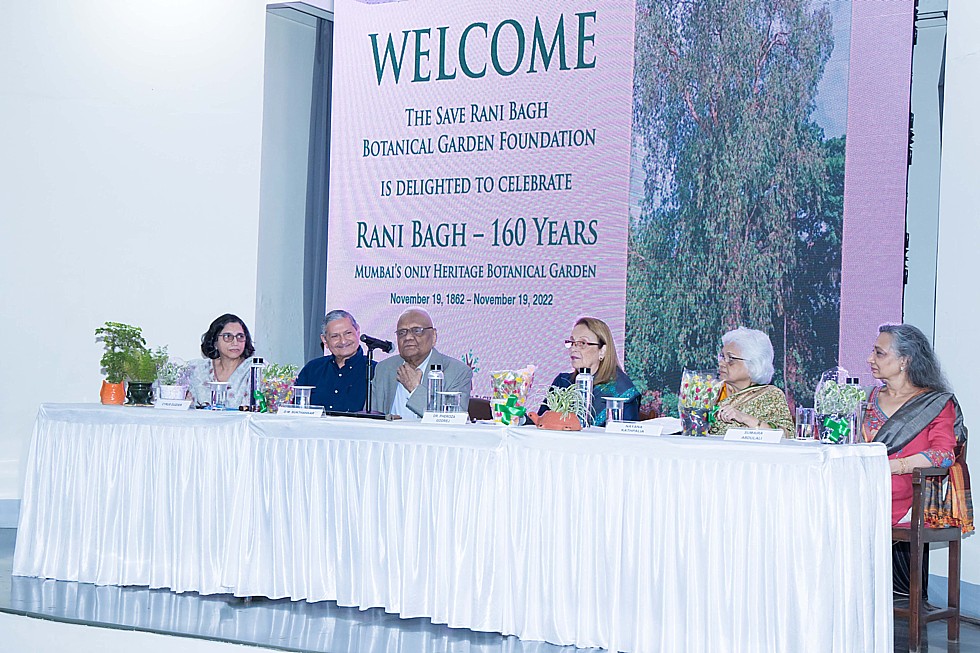
Above: Speakers at the our Function to mark 160 years of the botanical garden - fr L Hutokshi Rustomfram, Cyrus Guzder, D.M. Sukthankar,
Dr. Pheroza Godrej, Nayana Kathpalia, Sumaira Abdulali
Re-christening Campaign brings our work to fruition
In March 2022 we initiated a campaign to change Rani Bagh’s name from ‘V.J.B. Udyan va Pranisangrahalaya’ to ‘V.J.B.
Vanaspati Udyan va Pranisangrahalaya’ (V.J.B.
Botanical Garden and Zoo), a project very close to our hearts. This had been one of our long-term goals along with securing the DP designation of ‘botanical garden’. For the past four years we had kept the renaming proposal on hold knowing that the official DP designation sanction would add muscle to our renaming demand. In 2002 we decided that we would use the 160-year milestone as a persuasive pivot point to push for the renaming. At a meeting in May 2022 Mr. Sukthankar and we presented the proposal to AMC Ms. A. Bhide, who readily agreed to add the term ‘botanical’ to the official name. She asked the Director Zoo to prepare an official proposal. Thanks to bureaucratic sloth and red tape the official BMC proposal was ready only in August and was being tossed back and forth through various bureaucratic channels. We followed up vigorously at various departments trying to convince them that the renaming should be done before November 19, which marked 160 years of Rani Bagh. The final push came from Mr. Sukthankar who at a meeting with the Municipal Commissioner in early December pressed for the name-change to be affected before the end of 2022. BMC’s official renaming Resolution was finally passed on December 12, 2022. The name change will help in creating greater awareness of Rani Bagh’s botanical wealth and green heritage and act as a shield to protect the botanical garden and its trees from any future assault on its integrity.
The year 2022 was a climactic year for Rani Bagh’s botanical garden and for our 15-year endeavour to protect and preserve it. The DP Designation in September and the name change in December gives it iron-clad protection and confers upon it much-deserved standing and recognition. Henceforth no bureaucrats or power-brokers can ever dream of having the temerity to proclaim, as they did so often in the past, that Rani Bagh is not a botanical garden and “only” a garden.
Conclusion
We started way back in 2007, with no influential social contacts or money power. Today we look back with gratitude and marvel at the number of concerned individuals and organisations who stepped forward to extend support. The struggle to protect Mumbai's sole heritage botanical garden has been a journey punctuated by moments of joy and moments of heartache. The Corona virus-induced lockdown and the resultant lifting of the smog, showed us how much blue skies and clean air matter to our general wellbeing. Ideally Mumbai should have a dozen Rani Baghs – and if we cannot create more public botanical gardens - we should at the very least protect and pass on what we have inherited.
Our knowledge of the botanical garden and eagerness to share it, our work and conduct over the past 16 years have, we feel, won the grudging respect of the authorities. That we stood through rain and shine for five years and more, to supervise the revamping of animal enclosures, has made the Director and his team realise that we are genuine (if awfully annoying!) elements, who mean business and are not going to disappear. The vast swathes of greenery preserved intact, the undisturbed enchanting layout and the majestic age-old trees that continue to stand tall and resilient, have been our silent companions and ultimate reward.



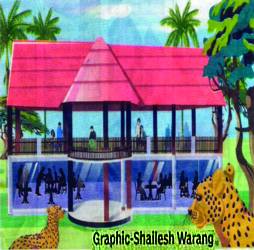
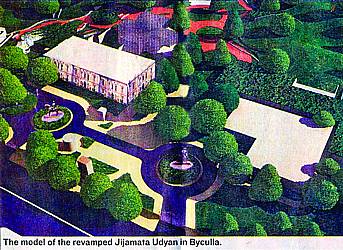
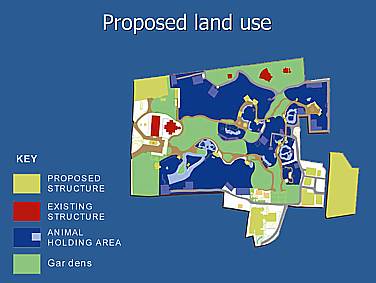
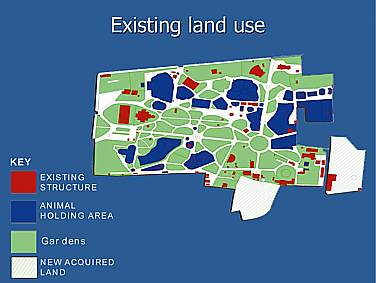
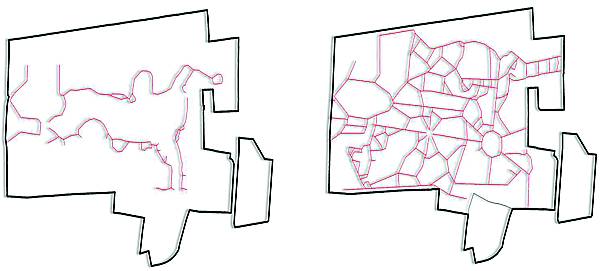





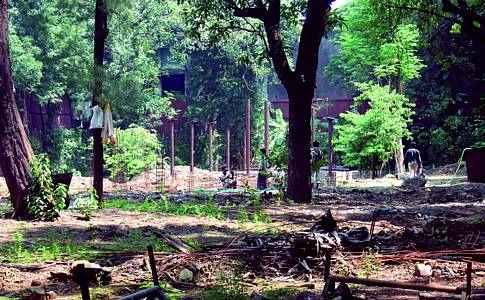
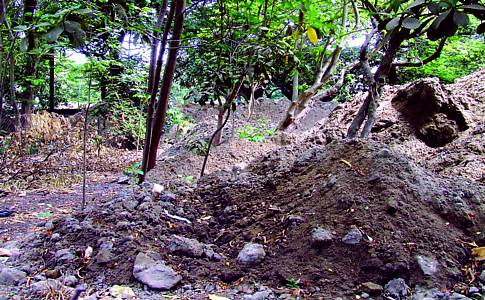
.jpg)
